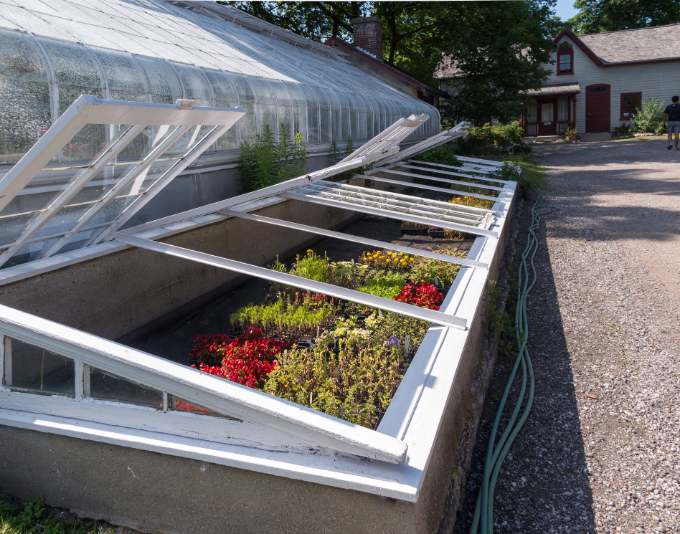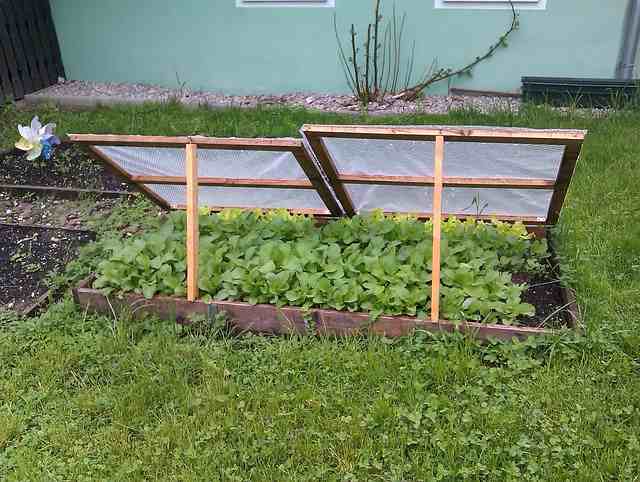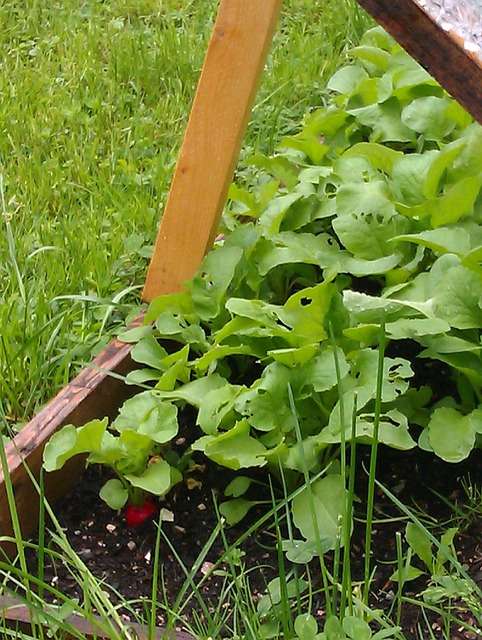How To Build A Cold Frame For All Year Round Garden Use

Make sure to like Living Green and Frugally on Facebook, Shop at amazon to help support my site and explore our PINTEREST BOARDS for innovative ways you can become self-sufficient.
A Guide to Building and Utilizing Cold Frames
Year-round gardening is a dream for many, and with the right tools and techniques, it’s entirely achievable. One such indispensable tool for extending the growing season and protecting delicate plants from harsh weather conditions is a cold frame.
This simple structure acts as a mini-greenhouse, providing a nurturing environment for plants even during the chilliest months. In this article, we’ll delve into the art of building and using a cold frame, exploring its benefits, construction process, ideal plants, and tips for maximizing its potential.
What Are Cold Frames?
Cold frames are essentially bottomless boxes with transparent tops that capture sunlight and warmth, creating a microclimate conducive to plant growth. Typically made from wood, metal, or recycled materials, they’re placed directly on the ground or on raised beds.
The transparent top, often made of glass or clear plastic, allows sunlight to penetrate while trapping heat inside, thus protecting plants from frost and providing a cozy environment for germination and growth.
Benefits of Making a Cold Frame:
- Extended Growing Season: By harnessing solar energy and shielding plants from harsh weather, cold frames enable gardeners to start planting earlier in the spring and continue harvesting well into the fall or even winter months.
- Protection from Extreme Conditions: Cold frames act as a buffer against frost, wind, and excessive rain, shielding delicate seedlings, herbs, and vegetables from damage.
- Cost-Effective Solution: Building a cold frame is a relatively inexpensive project compared to constructing a full-scale greenhouse. Many DIY designs can be crafted from recycled materials or affordable supplies found at hardware stores.
- Versatility: Cold frames can be used to propagate seedlings, harden off young plants before transplanting, or even grow cold-hardy crops throughout the winter, making them a versatile addition to any garden.
How to Build a Cold Frame: To illustrate the construction process, we’ve included a step-by-step video tutorial from YouTube titled “How to Make A Cold Frame Step-by-Step”. This comprehensive guide walks you through the materials needed and the assembly process, ensuring that even beginners can tackle this project with confidence.
Getting a Head start This Spring:
As the days grow longer and temperatures begin to rise, now is the perfect time to set up your cold frame for the upcoming growing season. Start by selecting a sunny location in your garden with good drainage. Clear the area of debris and level the ground if necessary. Then, assemble your cold frame according to the instructions provided in the video, ensuring that it’s sturdy and well-anchored to withstand gusty winds.
Once your cold frame is in place, fill it with nutrient-rich soil and sow seeds or transplant seedlings of your favorite early-season crops such as lettuce, spinach, kale, radishes, and carrots. Keep an eye on the weather forecast and adjust the ventilation of your cold frame as needed to prevent overheating on sunny days and provide adequate airflow to prevent fungal diseases.

Plants That Do Well cold frame
A cold frame provides a protected environment that is especially conducive to growing cold-hardy vegetables, herbs, and some flowers. Here are some plants that thrive in a cold frame:
- Lettuce: Various types of lettuce, including leaf lettuce, romaine, and butterhead, grow well in a cold frame. They’re quick to germinate and mature, making them ideal for early spring salads.
- Spinach: Spinach is a cool-season crop that thrives in the protected environment of a cold frame. It’s packed with nutrients and can be harvested as baby greens or allowed to mature for larger leaves.
- Kale: Kale is incredibly cold-hardy and can withstand temperatures well below freezing. Its sturdy leaves make it a perfect candidate for winter harvesting in a cold frame.
- Arugula: Arugula, also known as rocket, is a peppery salad green that grows quickly in cool temperatures. It adds a zesty kick to salads and sandwiches and thrives in the mild conditions of a cold frame.
- Radishes: Radishes are one of the quickest-growing vegetables, making them perfect for early spring planting in a cold frame. Their crisp, spicy roots are ready to harvest in just a few weeks.
- Carrots: Carrots prefer cool temperatures and can be sown in a cold frame as early as late winter or early spring. Choose smaller varieties suited for container or raised bed gardening for best results.
- Swiss Chard: Swiss chard is a versatile leafy green that grows well in the cooler temperatures of a cold frame. Its colorful stems and tender leaves add a pop of flavor and nutrition to soups, stir-fries, and salads.
- Cilantro: Cilantro is a cool-season herb that bolts quickly in hot weather but thrives in the mild conditions of a cold frame. Sow seeds directly in the soil for a continuous harvest of fresh cilantro leaves.
- Parsley: Parsley is another herb that grows well in a cold frame. It’s slow to bolt and can be harvested throughout the growing season for fresh flavor in soups, sauces, and salads.
- Violas and Pansies: These cold-hardy flowers not only add color to your cold frame but also attract beneficial insects. Plant them alongside your vegetables to enhance pollination and add beauty to your garden.

Remember to check the specific requirements of each plant regarding sunlight, watering, and spacing to ensure optimal growth and productivity in your cold frame. With proper care and attention, you can enjoy a diverse and abundant harvest of fresh produce year-round.
Longer Harvests in Winter:
As the temperatures begin to drop in late fall, don’t pack away your gardening tools just yet. With a well-insulated cold frame, you can continue growing fresh produce throughout the winter months. Cold-hardy vegetables like arugula, Swiss chard, winter lettuce varieties, and spinach thrive in the protected environment of a cold frame, providing you with a bountiful harvest even when the rest of your garden lies dormant.
In conclusion, building a cold frame opens up a world of possibilities for year-round gardening. Whether you’re eager to get a headstart on spring planting or extend your harvests well into winter, this simple yet effective structure is sure to become an invaluable asset in your gardening arsenal. With proper planning and care, your cold frame will not only nurture your plants but also nurture your passion for gardening throughout the seasons.